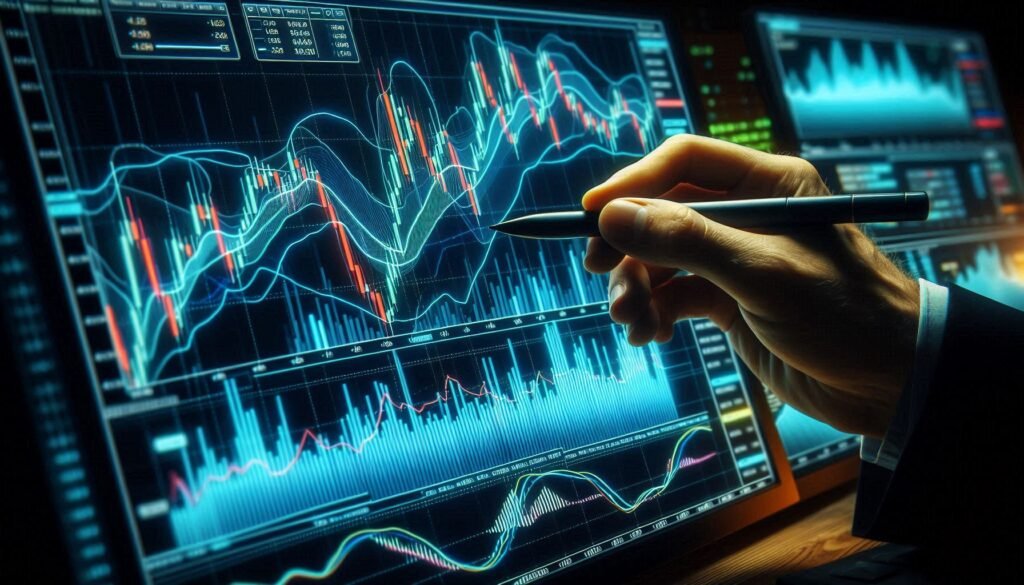Forex trading has become one of the most popular ways for individuals to invest and grow their wealth. But navigating the world of foreign exchange can be a daunting task, especially if you’re just getting started. This guide will walk you through everything you need to know about Forex trading, from the basics to advanced strategies, so you can confidently step into this exciting, highly liquid financial market.
Whether you’re a beginner looking to dip your toes into Forex or an experienced trader wanting to refine your skills, this guide is for you. By the end, you’ll understand what Forex trading entails, how to get started, and the strategies and tools you’ll need to succeed.
Chapter 1: Understanding Forex Trading
What is Forex Trading?

Forex, short for foreign exchange, is the process of buying and selling currencies to profit from price fluctuations. The foreign exchange market is the largest and most liquid financial market in the world, with a daily turnover of over $6 trillion.
Forex trading operates in currency pairs, such as EUR/USD (Euro/US Dollar). A trader speculates on whether one currency will strengthen (appreciate) or weaken (depreciate) relative to another.
Key Forex Terms to Know
- Currency Pairs: Currencies are traded in pairs (e.g., EUR/USD). The first currency is the “base,” and the second is the “quote.”
- Bid/Ask Price: The bid is the price at which you can sell a currency pair, while the ask is the price to buy.
- Pip: A “percentage in point,” or pip, is the smallest price move in a currency pair.
- Spread: The difference between the bid and ask price. Smaller spreads are ideal for traders.
Types of Currency Pairs
- Major Pairs: Pairs that include the US Dollar (e.g., EUR/USD, USD/JPY). Highly liquid and volatile.
- Minor Pairs: Pairs that don’t include the US Dollar but involve major currencies (e.g., GBP/EUR).
- Exotic Pairs: Pairs involving a major currency and a currency from an emerging market (e.g., USD/TRY).
Chapter 2: How to Get Started with Forex Trading
Choosing a Reliable Broker
Your trading experience depends significantly on selecting the right broker. Some factors to consider include:
- Regulation: Ensure the broker is regulated by reputed authorities (e.g., CFTC, ASIC, FCA).
- Spreads and Commissions: Look for brokers with low costs.
- Leverage Options: Higher leverage can amplify returns but also risks.
- Trading Platforms: Reliable brokers offer platforms like MetaTrader 4 (MT4) or MetaTrader 5 (MT5).
Popular brokers include [Broker A], [Broker B], and [Broker C].
Setting Up a Trading Account
Forex brokers offer various account types, such as Standard, Mini, and Micro accounts. Assess your budget and trading goals before opening an account. Once registered:
- Deposit Funds securely using payment methods like bank transfers or PayPal.
- Withdraw Profits seamlessly via your chosen method.
Understanding Forex Platforms
MT4 and MT5 dominate the market, but many brokers also offer web-based and mobile platforms. Test out a demo account to familiarize yourself with the interface.
Chapter 3: Fundamental Analysis in Forex
Why Fundamental Analysis Matters
Fundamental analysis focuses on economic, political, and social factors influencing currency values. Key drivers include:
- Economic Indicators (e.g., GDP, Consumer Price Index, and unemployment rates).
- Central Bank Policies (e.g., interest rate hikes or monetary easing).
- Global Events (e.g., geopolitical tensions, trade agreements).
How to Use Economic Calendars
Economic calendars display upcoming events like interest rate decisions. Use these tools to time trades effectively.
Chapter 4: Technical Analysis for Forex Traders

Basics of Chart Reading
There are three main chart types:
- Candlestick Charts provide detailed price movement data.
- Bar Charts show opening, closing, high, and low prices.
- Line Charts track daily closing prices.
Key Technical Indicators
- Moving Averages for identifying trends.
- Relative Strength Index (RSI) for market overbought/oversold conditions.
- MACD for momentum analysis.
- Bollinger Bands for potential breakouts.
Chapter 5: Forex Trading Strategies
Popular Trading Strategies
- Day Trading involves quick, short-term trades within a single day.
- Swing Trading targets medium-term trends, often lasting days or weeks.
- Scalping involves placing multiple trades for small, frequent profits.
- Position Trading emphasizes long-term market trends.
- News Trading capitalizes on economic or political events.
Chapter 6: Risk Management in Forex

Risk management is critical to staying profitable in Forex trading. Key practices include:
- Setting Stop-Loss Orders to limit losses.
- Applying the Risk-Reward Ratio (e.g., 1:2 ratio minimizes losses while maximizing profits).
- Managing Leverage carefully to avoid unnecessary risk exposure.
Chapter 7: Trading Psychology
How to Master Your Mindset
Fear and greed can derail even the most experienced traders. Stay disciplined by:
- Developing a Trading Plan for consistency.
- Keeping a Trading Journal to learn from past mistakes.
- Avoiding emotional reactions during market volatility.
Chapter 8: Forex Trading Tools and Resources
Must-Have Resources
- Websites for Forex News: [Forex News Site A], [News Site B].
- Books and Courses: [Book Name], [Course Name].
- Signal Services (both free and paid): Use tools like [Platform Name].
Chapter 9: How to Build a Profitable Forex Trading Plan
- Set Realistic Goals such as “earn X% monthly.”
- Test Your Strategy using demo accounts.
- Keep a Trading Journal to record and evaluate trades.
The Road Ahead for Aspiring Forex Traders
Forex trading is as rewarding as it is challenging. By incorporating the strategies and tools in this guide, you’ll be well-equipped to take advantage of opportunities while minimizing risks. Persistence, discipline, and a commitment to continuous learning are your greatest assets.
Want to stay ahead in your trading game? Subscribe to our newsletter for tips, resources, and updates on Forex trading. Success is just a trade away.
How much money do I need to start Forex trading?

You can begin with as little as $100, though $500–$1,000 is ideal for better flexibility.
Can I trade Forex without leverage?
Yes! Trading without leverage reduces exposure to risk
Is Forex trading legal in my country?
Forex trading is legal in most regions but consult your local regulatory guidelines.
What are the best times to trade Forex?
The London and New York sessions are the most active times (8 AM–11 AM EST).
How do I withdraw profits from Forex trading?
Use the withdrawal method provided by your broker, such as bank transfers, PayPal, or debit cards.






